
SDG Impact Assessment Report 2020
Over the past year, Telenor has continued to support the United Nations Sustainable Development Goals (SDGs) as part of the wider 2030 Agenda for Sustainable Development. In a year that has been shaped by the COVID-19 crisis, the importance of mobile technology, and its ability to connect people across the world, has become more evident than ever before. We see our business operations as intertwined with our commitment to society, and have maintained our responsibility to empower societies by promoting digital inclusion, increasing connectivity, and building skills for a digital future.
As we continue to develop our goals, responsibilities and services as they relate to the SDGs, we recognise that certain areas are inherently related to our business of connecting people and societies. At the core of our company’s business functions, our strategic focus this year remained on reducing inequalities and empowering societies (SDG 10), but we also saw the impact our operations can have on the areas of quality education (SDG 4), innovative and resilient infrastructure (SDG 9), and the fight against climate change (SDG 13).
This year we continued to elevate our impact on the SDGs through several collaborative initiatives (SDG 17) with our partners, including UNICEF and Plan International, such as digital birth registration and our efforts to improve children’s online safety and digital inclusion.
The interconnected nature of all 17 SDGs means that, as a whole, our initiatives and activities will almost certainly have a recognisable impact across the broad range of issue areas covered by the SDGs.
Our commitment to reducing inequalities
Our commitment to raising standards and providing connectivity is facilitated by our new three-pronged strategy of growth, modernisation, and responsible business. Inclusive in this approach are a range of initiatives aimed at promoting digital and financial inclusion and continuously improving working conditions and standards in our operations and supply chain.
Working in the context of COVID-19
The current public health crisis brought about by the spread of COVID-19 presents an immense challenge to the achievement of the SDGs, given its widespread impact on global health (SDG 3), education (SDG 4), gender equality (SDG 5), economic opportunity (SDGs 1, 8), and global inequalities (SDG 10). In this way, it has crystallised certain priority areas for Telenor, including cyber security, customer privacy, and employee health and safety. Given that the pandemic has widened digital divides, thereby increasing inequalities around the world, our strategic focus on SDG 10 will be more important than ever moving forward, allowing us to effectively build back better.
At the same time, COVID-19 also presents a significant opportunity to achieve the targets set forth in the UN’s 2030 Agenda – similar to the SDGs, the challenges presented by the pandemic are globally interconnected and require a coordinated and cooperative response, giving digital connectivity a key role to play. An increased load across our networks has necessitated increased investment in our infrastructure, and alongside partners UNICEF and Plan International, Telenor has worked to support the millions of children impacted by school closures. Additionally, in order to aid healthcare professionals on the frontline of the pandemic response, we have provided donations in the form of protective health equipment and support to increase the availability of essential medical supplies. Read more about Telenor’s COVID-19 response here.
Overall, Telenor’s own commitment towards responsible business, which is built on promoting digital inclusion by extending connectivity and building digital skills while simultaneously raising standards in operations and our supply chain, will allow us to manage the impact of the pandemic on our employees and suppliers while also increasing network accessibility across the world (SDG 9).
Big data for social good
We are working with health authorities in a number of countries to predict and prevent the spread of the COVID-19 virus. To do so, we have leveraged our experience utilising mobility data to understand the spread of dengue fever in Pakistan and malaria in Bangladesh.
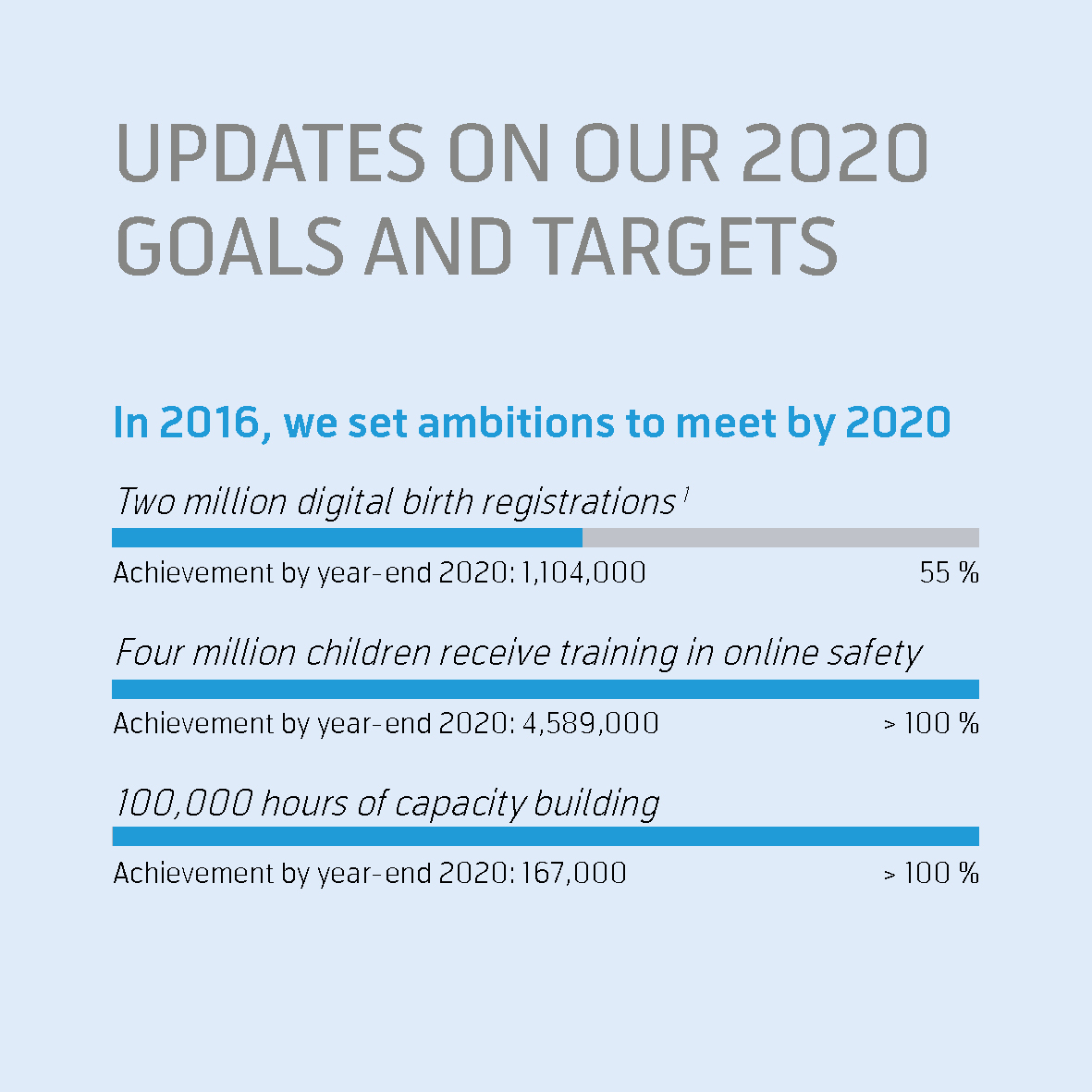
Child online safety: In 2020 we realised our ambition to train four million children in online safety, which was particularly important given the prevalence of school closures due to COVID-19. Read more here.
Digital birth registration: COVID-19-related lockdowns were challenging to the project, and our target achievement of two million digital birth registrations has consequently been pushed to 2021. We will continue our work to build government
[1] As reported in previous years, our original ambition was 7 million digital birth registrations by 2020. Due to challenges including training capacity of users and delays in improved solution rollout, the target was revised to reach 2 million. You can read more about these goals and targets in our 2020 Sustainability Report.
Telenor’s SDG Impact
As part of Telenor’s belief in connecting the many, not just the few, we are committed to supporting all of the UN Sustainable Development Goals (SDGs). In particular, we believe that our business operations have the potential to contribute to reducing global inequalities (SDG 10) through our efforts to provide digital inclusion and our dedication to raising working conditions and operating standards wherever we are present. SDG 10 is embedded in our overall business strategy, and the interconnected nature of the SDGs means that this strategic focus will impact all 17 goals. In the diagram below, the size of the SDG boxes reflects Telenor’s impact.
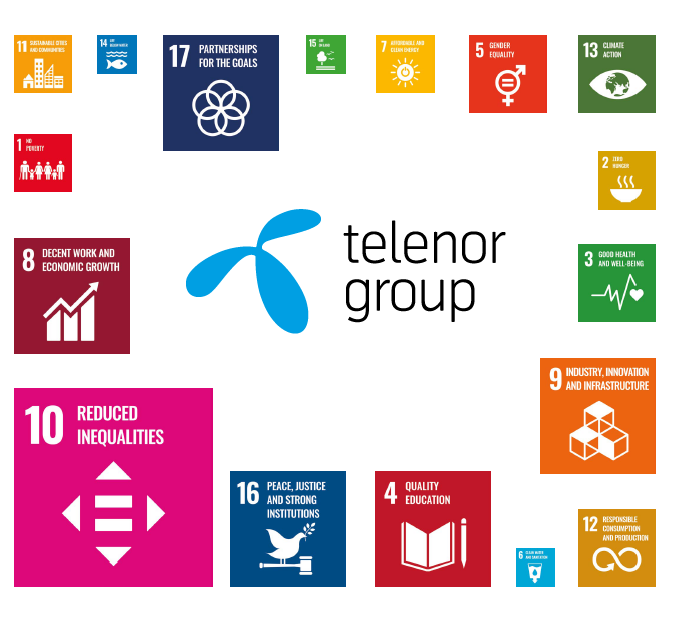
SDG 10: Reduced Inequalities
![]() At the very core of what we do lies our belief in the importance of connecting people and societies in order to reduce global inequalities (9.c, 10.1, 10.2). We work to promote digital inclusion by building skills and leveraging new technology to provide access to services, all while simultaneously raising standards in our operations and supply chain (8.8, 10.3). Connectivity is a key component in achieving the SDGs, and our target is to reach a 65 per cent share of active data users in our customer base by 2023. The COVID-19 pandemic has made digital inclusion a more salient priority than ever before (3.d), with increases across the board in remote working, distance learning and telemedicine (4.4, 8.5). We also support the ability of social innovation to empower societies and close the inequality gap (8.3) through a range of initiatives, such as digital platforms that provide weather forecasts (13.1) and agricultural advice in Pakistan and Thailand (2.4, 12.a).
At the very core of what we do lies our belief in the importance of connecting people and societies in order to reduce global inequalities (9.c, 10.1, 10.2). We work to promote digital inclusion by building skills and leveraging new technology to provide access to services, all while simultaneously raising standards in our operations and supply chain (8.8, 10.3). Connectivity is a key component in achieving the SDGs, and our target is to reach a 65 per cent share of active data users in our customer base by 2023. The COVID-19 pandemic has made digital inclusion a more salient priority than ever before (3.d), with increases across the board in remote working, distance learning and telemedicine (4.4, 8.5). We also support the ability of social innovation to empower societies and close the inequality gap (8.3) through a range of initiatives, such as digital platforms that provide weather forecasts (13.1) and agricultural advice in Pakistan and Thailand (2.4, 12.a).
Challenges: Inherent in our mission to reduce inequalities by increasing connectivity are a simultaneous increase in a variety of risks related to child online safety, privacy, data protection, and cybersecurity. The interconnected nature of the SDGs means that these and other risks are described in relation to our efforts surrounding education (SDG 4), climate action (SDG 13) and business activities (SDG 9).
SDG 4: Quality Education
![]() We recognise that connectivity alone is not enough to effectively empower societies, and that enhancing education and building digital skills (4.4, 4.7) will allow for more people to take advantage of the opportunities that connectivity can offer. As part of our dedication to building critical skills, increasing competencies, and supporting the digitalisation of societies, we have developed a number of initiatives and programmes, including our ‘Young Safe Internet Leader’ camp in Thailand and the Bruk Hue (“Be Safe”) project in Norway (4.a, 4.c).
We recognise that connectivity alone is not enough to effectively empower societies, and that enhancing education and building digital skills (4.4, 4.7) will allow for more people to take advantage of the opportunities that connectivity can offer. As part of our dedication to building critical skills, increasing competencies, and supporting the digitalisation of societies, we have developed a number of initiatives and programmes, including our ‘Young Safe Internet Leader’ camp in Thailand and the Bruk Hue (“Be Safe”) project in Norway (4.a, 4.c).
Challenges: COVID-19 has significantly changed the education landscape, with children and young people around the world spending more time online engaging in e-learning. While we are proud to contribute to helping secure access to the internet for all, this also poses a significant threat in terms of child online safety (16.2, 16.10), which we are working to raise awareness of and improve reporting and prevention of harmful content.
SDG 9: Industry, Innovation, and Infrastructure
![]() We continue to work to supply the necessary infrastructure to ensure everyone can access and derive the benefits associated with digital societies (9.1). We have made a significant contribution towards increasing access to ICT technologies (9.c), with access to mobile network coverage now nearly universal, an important step in our efforts to provide access to services like education, banking (8.10, 9.3), and healthcare. Our investments in start-up incubation and acceleration (8.3), 5G, internet of things, artificial intelligence, and other advanced digital services contributes to increased resource-use efficiency and overall more sustainable infrastructure (8.1, 9.1, 9.4, 9.5), which is important in the fight against climate change.
We continue to work to supply the necessary infrastructure to ensure everyone can access and derive the benefits associated with digital societies (9.1). We have made a significant contribution towards increasing access to ICT technologies (9.c), with access to mobile network coverage now nearly universal, an important step in our efforts to provide access to services like education, banking (8.10, 9.3), and healthcare. Our investments in start-up incubation and acceleration (8.3), 5G, internet of things, artificial intelligence, and other advanced digital services contributes to increased resource-use efficiency and overall more sustainable infrastructure (8.1, 9.1, 9.4, 9.5), which is important in the fight against climate change.
Challenges: Given our industry, we face challenges in the form of infringement on customers’ rights to privacy and freedom of expression (16,10). Telenor investigates cases where authorities may seek to restrict access to the internet (16.10), such as what occurred in Myanmar (9.1, 10.2, 10.3). Corruption and cybersecurity risks are among the top threats that can undermine our legitimate business activities. We uphold the highest ethical standards through our Code of Conduct and Anti-Corruption Compliance Programme (16.5, 16.b), and are expanding our capacity to detect and respond to a range of cyberthreats, while embedding security in all aspects of our business (9.1).
SDG 13: Climate Action
![]() Our commitment to responsible business also relates to our efforts to combat climate change, (SDG 13) which involves the setting of science-based goals and targets. Telenor is currently working to reduce our CO2 emissions in Asia by 50 per cent and to become completely carbon neutral in the Nordics by 2030 (3.9). We are also decreasing our footprint through initiatives aimed at improving the recycling of electronic waste and the sustainability criteria used in our procurement processes (11.6). At the same time, our climate ambition is broader than just reducing our own impact, and our investment in the development of new ICT technology and smart services through platforms such as the Internet of Things (IoT) has the potential to decrease carbon emissions, reduce resource intensity, and deliver substantial social benefits (7.3, 7.b, 12.2, 13.3).
Our commitment to responsible business also relates to our efforts to combat climate change, (SDG 13) which involves the setting of science-based goals and targets. Telenor is currently working to reduce our CO2 emissions in Asia by 50 per cent and to become completely carbon neutral in the Nordics by 2030 (3.9). We are also decreasing our footprint through initiatives aimed at improving the recycling of electronic waste and the sustainability criteria used in our procurement processes (11.6). At the same time, our climate ambition is broader than just reducing our own impact, and our investment in the development of new ICT technology and smart services through platforms such as the Internet of Things (IoT) has the potential to decrease carbon emissions, reduce resource intensity, and deliver substantial social benefits (7.3, 7.b, 12.2, 13.3).
Challenges: A challenge in moving towards sustainable energy sources comes from our Asian business markets, where 80% of our carbon emissions come from carbon intense electricity grids. To decarbonise our electricity supply, we are committed to increasing our share of renewable energy (7.2, 13.1). To do so, we intend to influence grid regulations and enabling mechanisms through collaboration with partners and global trade associations given the lack of widely available Corporate Power Purchase Agreements (PPAs) in our Asian markets (7.a).
Examples of our Impact
Digital inclusion
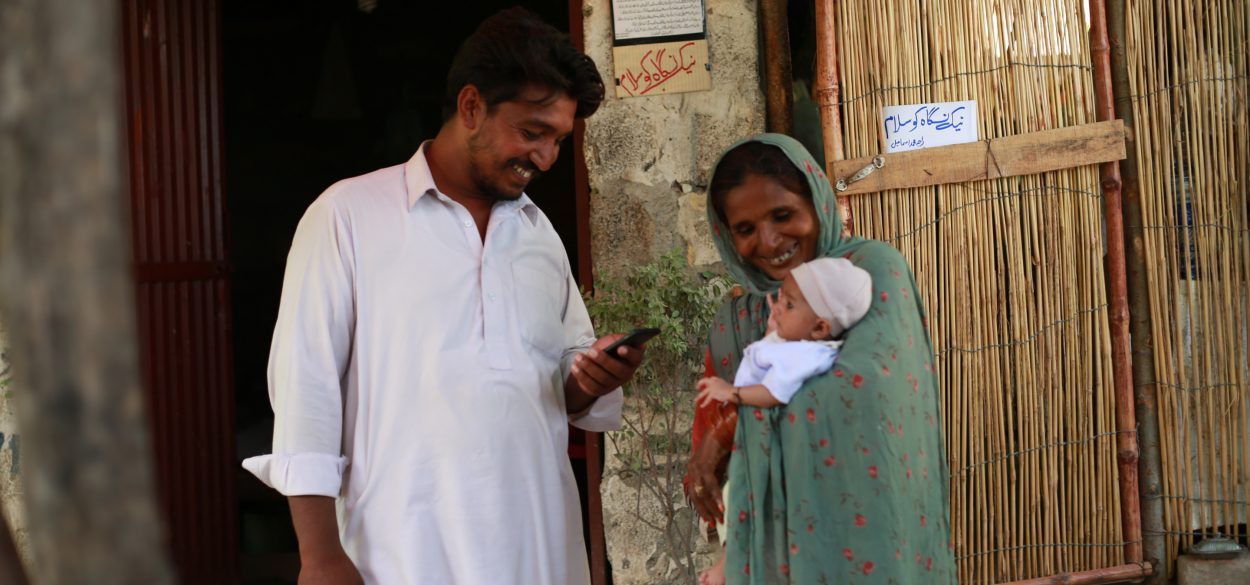
Digital birth registration
In 2016, along with local governments and UNICEF, we set targets to address digital birth registration through an app to register births in Pakistan and Myanmar. In 2020, Telenor’s Digital Birth Registration initiative was awarded three prizes at the Ad Stars 2020 Awards: Gold Award for Innovative Use of Mobile Devices, Bronze award in Human Rights, and Crystal award in Public Service & Awareness. In Myanmar, the pilot project in Mon state continued training health workers in using the app and registered 32,850 births.
Key SDGs addressed: 
This initiative provides an identity to previously unregistered children (SDG target 16.9), seeks to empower and promote social, economic and political inclusion (10.2), and ensures equal opportunity for all (10.3). Through our partnerships, we are using mobile technology for the benefit of children in lesser developed countries via activities such as capacity-building, knowledge sharing and distribution of data (17.8, 17.17, 17.18).
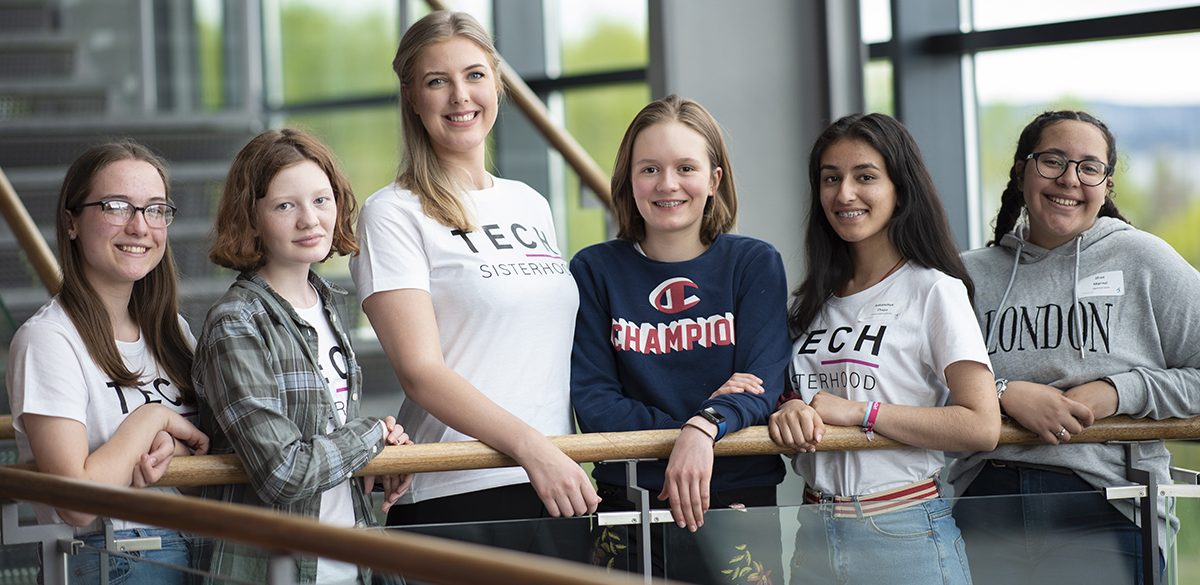
Girls create tech
Research shows there is a global gender gap among creators of tech with less girls developing competencies that relate to STEM (science, technology, engineering, and mathematics) fields and therefore less women pursuing tech careers. In 2019, Telenor and Plan International launched the Girls Create Tech Academy (GCTA) connecting girls to female coaches at Telenor to inspire them to consider careers in technology. 63.7% of the girls said it would be quite likely/very likely that they would study tech subjects in the future compared to a baseline of 29.4 %.
Key SDGs addressed:

We are committed to promoting diversity and inclusion at all levels of the organisation (5.5). By engaging public-private partnerships, we seek to enhance the use of enabling information and communications technology to promote the empowerment of women (5.b, 17.17). Together, we aim to bridge the digital skills gender gap by providing girls with digital and mobile technology solutions to create the skills and opportunities to take part in the creation of technology (4.4, 4.5).
Challenge:
Digital services have huge potential to improve people’s lives by addressing social, economic and environmental problems, increasing efficiency, and helping close the inequality gap. With increasing demand for these services comes an increasing expectation for securely stored, private data. Cyber security is a material risk for Telenor, especially in light of COVID-19. In 2020, we launched a security awareness program and had employees complete security training.
Skills for a digital future
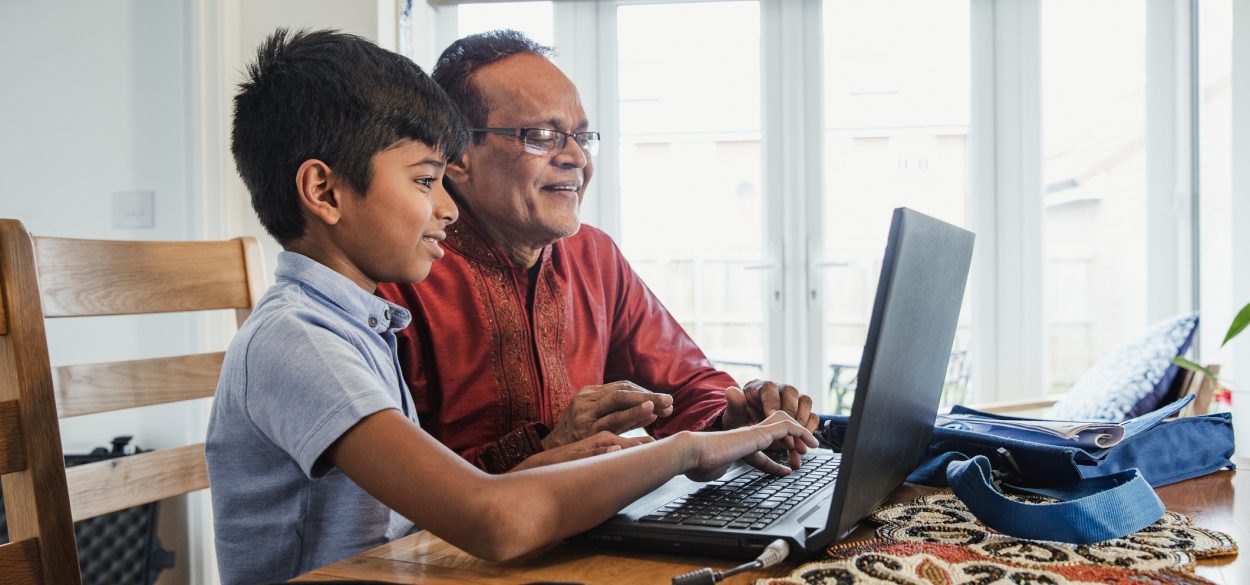
Children’s online safety
Online safety was a salient topic in 2020 due to COVID-19. We remained steadfast in our commitment to equip children with skills and knowledge to manage the benefits and risks inherent with being online. This year we realised our ambition to train four million children in online safety via initiatives such as Grameenphone in Bangladesh, where children were trained in digital and traditional media. We also worked in Myanmar to make online safety curriculum available on the government’s teacher training portal through our Digiworld initiative.
Key SDGs addressed:

Our online safety initiatives recognise the fact that connectivity is not truly inclusive until it is safe and accessible for all (10.2). We have a range of educational material to equip children and young people with the skills and knowledge to navigate the digital world safely (4.7), allowing us to fight against digital abuse and online violence (16.2).
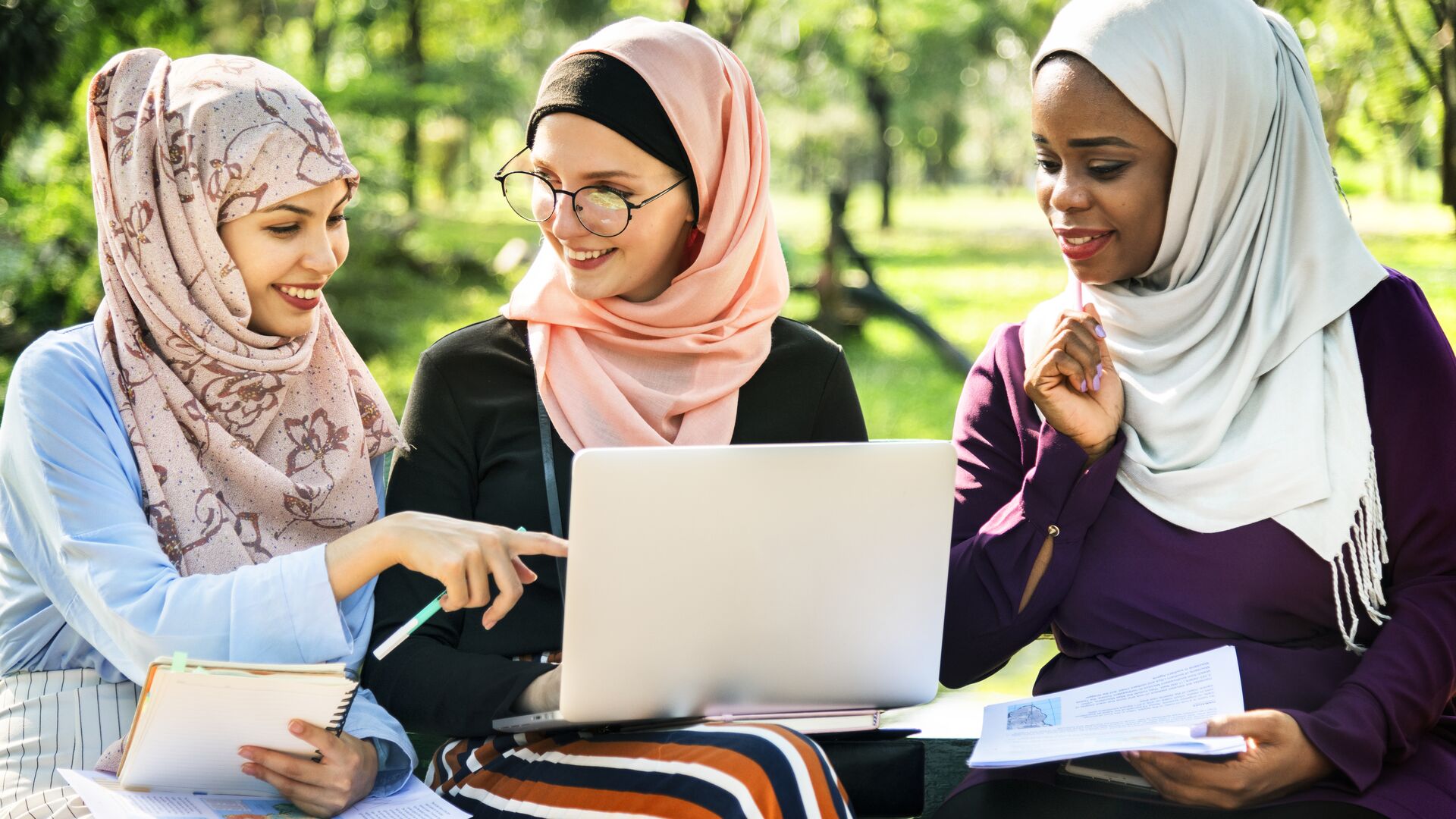
Future skills
COVID-19 related closures impacted online education in all our markets, but the access provided by digital platforms allowed many of our programmes to continue. Our Future Skills for All programme, in collaboration with UNICEF and Malaysia Digital Economy Corporation, continued to train school teachers and managers at internet centres in coding. In Finland, DNA continued offering training to small enterprises and entrepreneurs on concrete learnings and steps to improve and safeguard their businesses.
Key SDGs addressed:

Through our collaborations with international partners, as well as local organisations and government agencies (17.17), we continued our focus on leveraging technology to provide critical digital skills to youth and adults (4.4, 4.6), and leveraged our technology to increase access and competencies and to support digitalisation of societies where we operate (9.c).
Challenge:
Throughout 2020 we saw a big change in digital activity due to COVID-19, resulting in more adults and young people learning, working, and socialising online than ever before. Children are particularly vulnerable to safety concerns online and may be exposed to cyberbullying, harmful content, attempts at fraud, and more. We aim to address these risks and to grow the digital resilience of young people. Read more here.
Continuing to reduce inequalities by raising standards
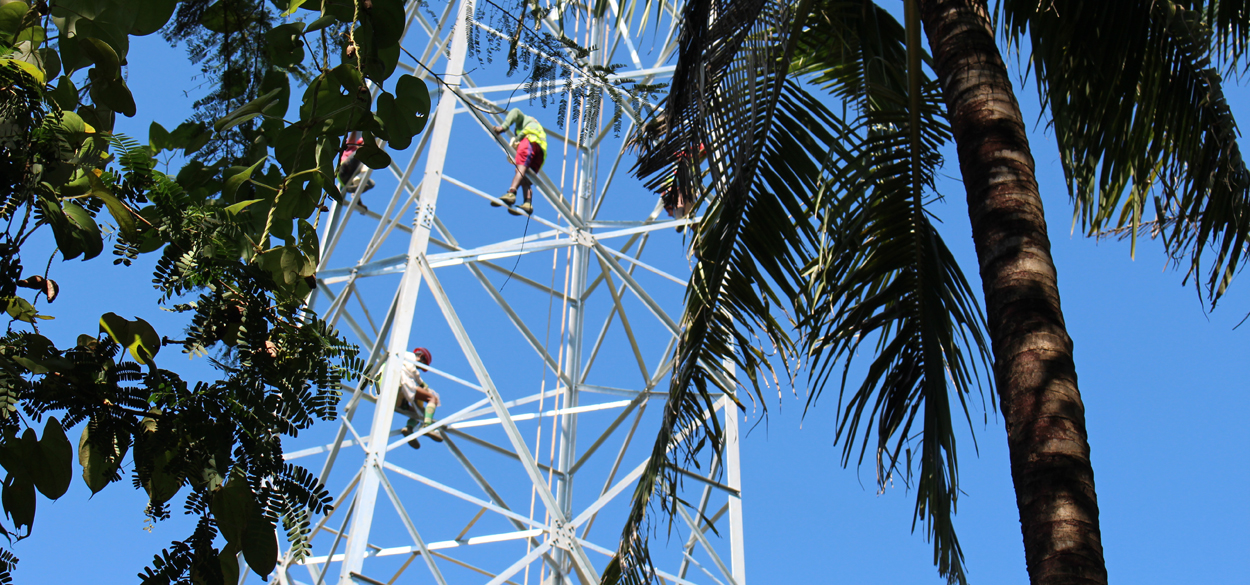
Respect for human rights
Telenor aims to uphold responsible business practices across our operations. This can be challenging in some markets, for example in Myanmar, due to complex challenges which in many instances were aggravated by COVID-19. Internet restrictions combined with increasing orders from authorities to impose restrictions to access certain websites impeded our ability to ensure connectivity for all. Our business is about enabling people to communicate, and it is crucial that the rights and opportunities to connect are not unduly restricted.
Key SDGs addressed:

Our operations and services can serve as tools that support freedom of expression, rights to privacy (16.10), and access for all (9.3, 9.c, 16.10), but a misuse of these services can also have negative consequences in these areas. Consequently, it is imperative that we maintain high standards to build and retain trust in the societies where we operate and ensure inclusion for all (10.2, 10.3).

#EachforEqual
Telenor has long seen diversity and inclusion as an enabler for responsible business, and we believe that pursuing gender equality can unleash a region’s economic potential and reinforce its dynamic growth. This year, Telenor’s Asia-based companies empowered women through the #EachforEqual campaign, which highlighted how discrimination, biases, social norms and expectations can influence the opportunities girls receive in education and at work.
Key SDGs addressed:

Our focus on SDG 10 means we will continue to work systematically on diversity and inclusion, with a broadened agenda that includes gender, abilities, competence, nationalities and LGBTI (10.2). We aim to increase women’s participation in the workforce and create equal opportunities for leadership (5.5), allowing our employees to seek fuller, more productive work (8.5).
Challenge: Raising standards across our business means focusing on working conditions, operating standards, and human rights wherever we operate. We continue to strengthen gender diversity and have set clear targets to increase participation of women. We also see that our operations and services can be misused, having an impact on human rights, therefore we are continuing our efforts to integrate these considerations into our operations through capacity building across functions and business units.
Climate and environment
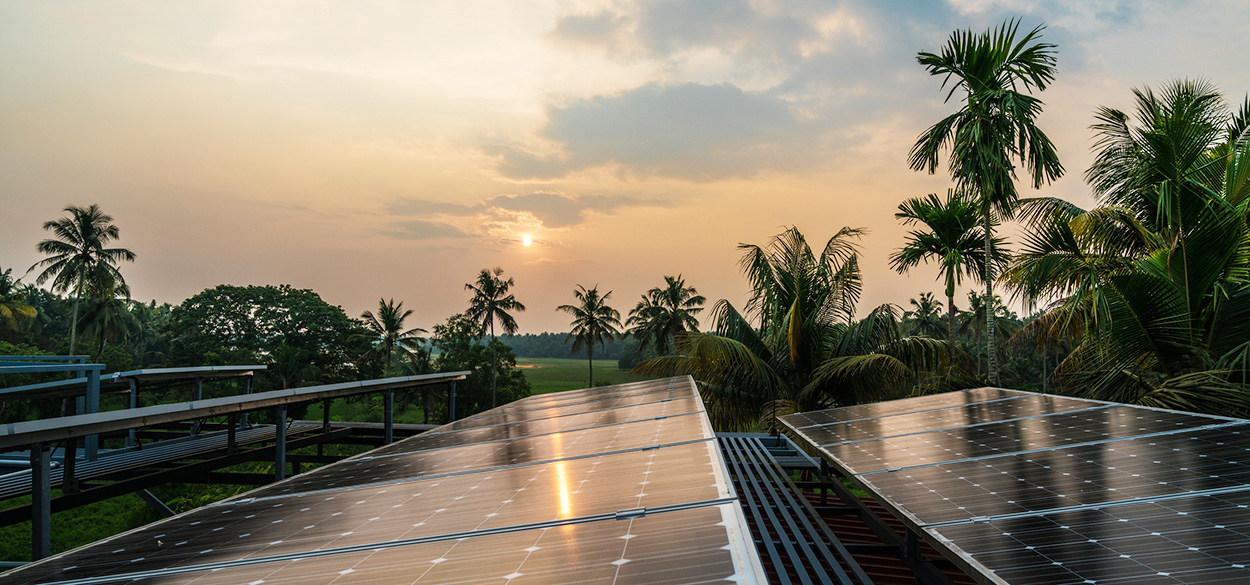
The might of light
In Myanmar, we are harnessing the power of renewable energy to help us reach our commitment of a 50 per cent reduction of our CO2 emissions in our Asian operations, which includes reliable network connections for 24 million customers. Through our solar installations we have experienced strong year-over-year growth of 27 per cent. As of year end 2020, more than 3,750 sites have been connected to a solar panel source and even more have moved from generators to the grid.
Key SDGs addressed:

By upgrading our energy sourcing in Myanmar and by focusing on renewables such as solar power, we are increasing our share of renewable energy (7.2,7.b), which will strengthen resilience to climate-related hazards (13.1) and allow us to operate in a more sustainable way (9.1, 9.4).
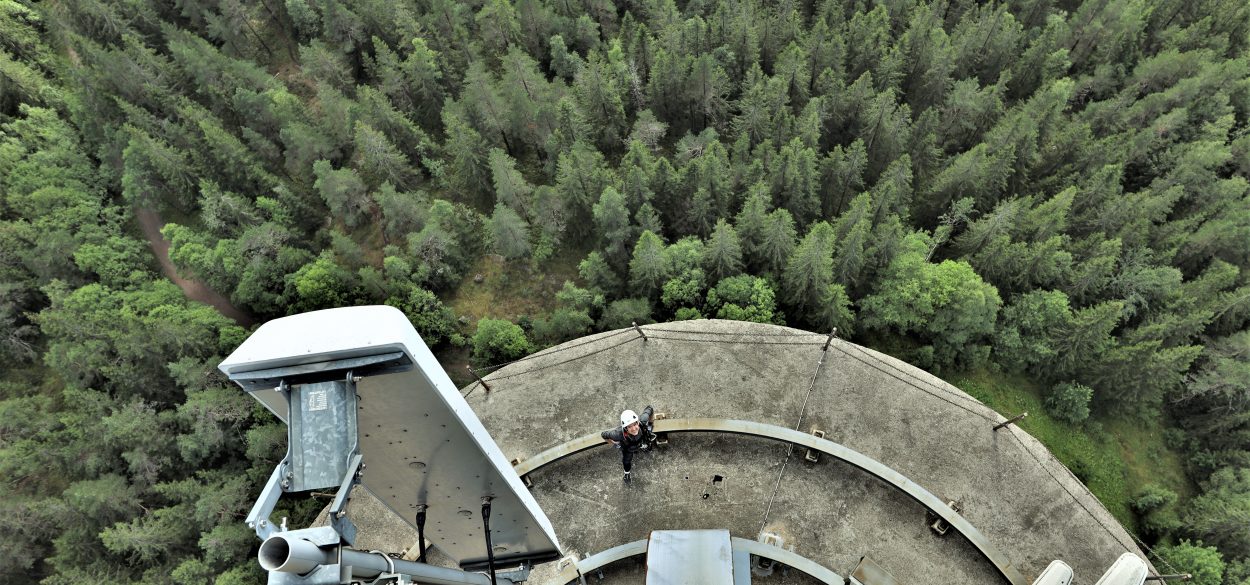
“Green” radio
Our ambition to achieve carbon-neutral business operations in our Nordic markets by 2030 means that we must seek unique solutions. In 2020, Telenor’s researchers developed an algorithm that will help reduce the environmental impact of Telenor’s mobile network operations, called the “Green Radio” project. By using data analytics and AI methods the algorithm will enable mobile networks to be more efficient, which will save energy and as a result decrease CO2 emissions by around 700 tonnes annually.
Key SDGs addressed:

Initiatives such as the “green” radio will not only seek to make our infrastructure more sustainable and resilient (9.1, 9.4) but will also increase efficiency through technological upgrading and innovation (8.2). By using data analytics and AI methods we can improve education and awareness-raising on climate change (13.3).
Challenge:
While ICT and the internet of things have the potential to provide a myriad of benefits, rising demand for these technologies and products will lead to an increase in our operational energy consumption, e-waste, and carbon emissions. For Telenor, we believe that the most material environmental aspect is climate change mitigation. We are also prioritising pro-active waste management and supporting a circular economy.